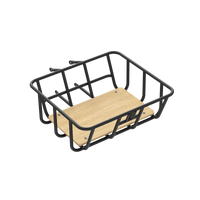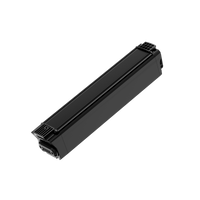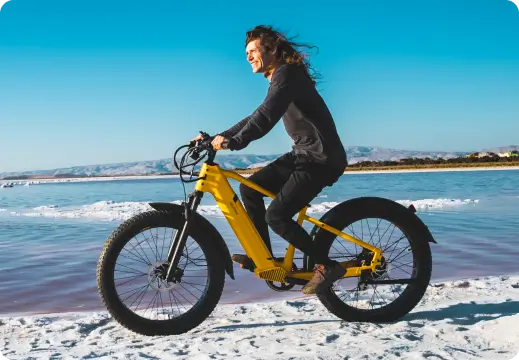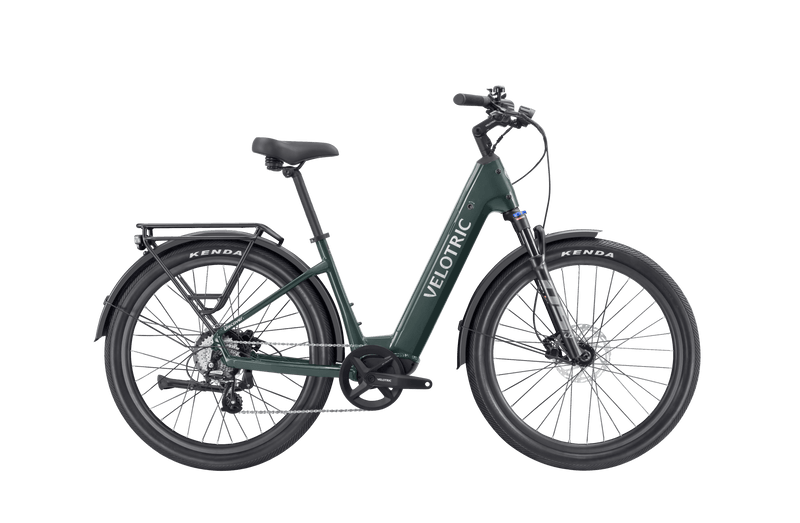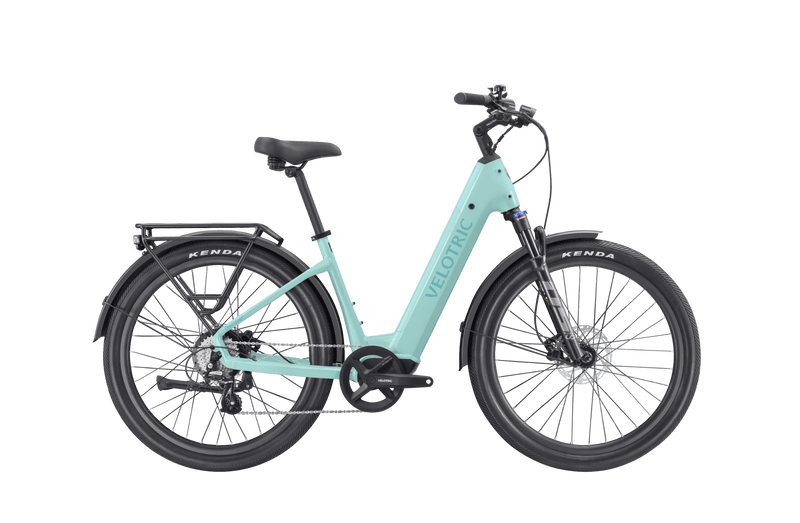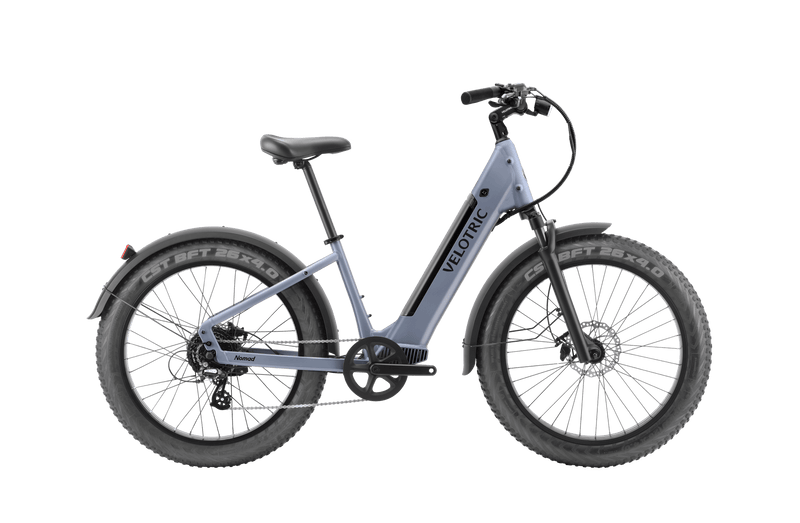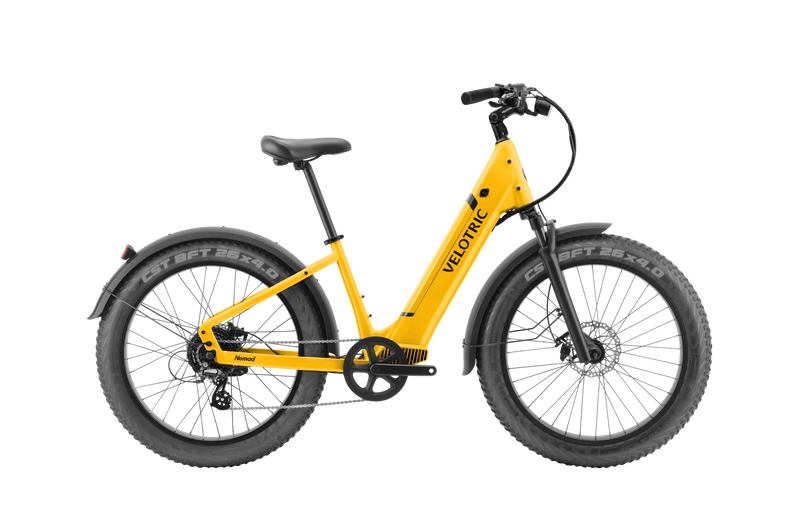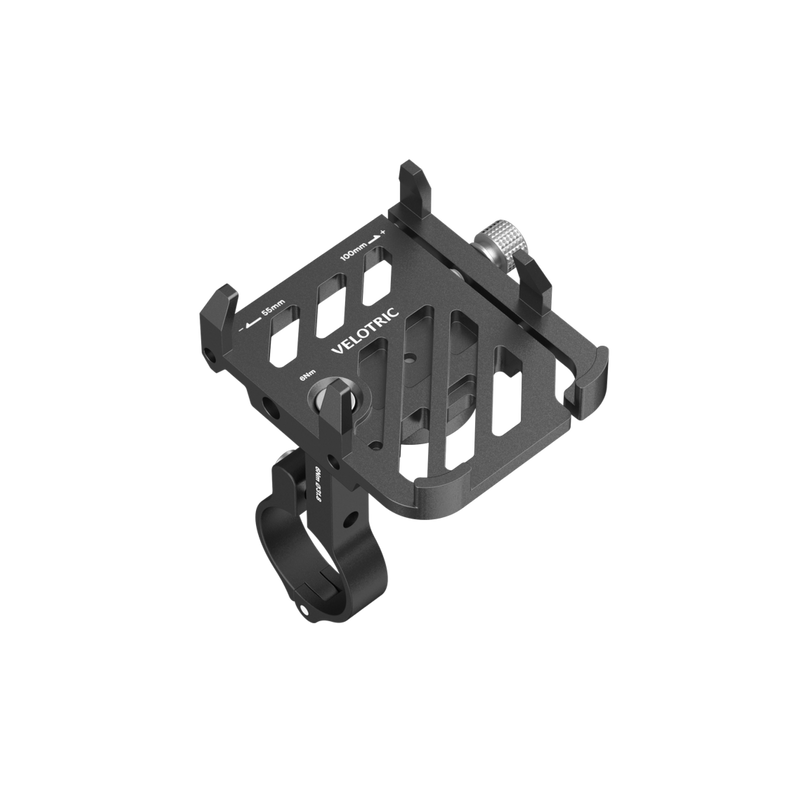Are you in the market for a new bike? Whether you’re a pro cyclist or a beginner, the right size bike for your body makes all the difference in the world. Research says that, on average, adults should , and biking is a fantastic way to achieve that goal. But how do you know when you’ve found the perfect fit?
Basic Terminology for Bike Sizing
First, it’s important to understand the terminology that is used when talking about bike sizes:
The two main measurements that determine bike size are the seat tube length and the top tube length. The seat tube is part of the frame the seat post goes into. The top tube is part of the frame that runs horizontally from the seat to the handlebars.
Now that we’ve reviewed some terminology, it’s time to pull out the measuring tape.
Height
The first step in determining what size bike you need is to measure your height: Your height gives you an idea of what size bike frame you should be looking for.
Stand against a wall without shoes on, and use a tape measure to measure your height from the floor to the top of your head. Note down the measurement in both centimeters and inches.
Inseam
Now it’s time to measure your inseam. This is the distance from the ground to the underside of your groin.
A common way to measure your inseam is by standing with your back against a wall and placing a book between your legs. Measure from the floor to the top of the book to get your inseam measurement number.
Check a Bike Size Chart
Once you have both measurements, you can use a bike size chart. Bike size charts typically use a combination of rider height and inseam length to determine the correct frame size. Luckily, we have a handy bike size chart online with heights listed next to the frame size and the general marker.
What Type of Bike Do I Need?
Once you’ve determined which size frame is your perfect match, the next question to consider is what kind of riding you see yourself doing. This is going to determine what kind of bike you ultimately need, which will determine other critical aspects of bike size, such as the frame and wheel size.
We’re going to be talking about (and featuring) some awesome ebikes (aka electric bikes), but the guidelines for finding the correct size are the same. Ebikes just have that certain wow factor that we simply can’t ignore.
Here is a quick breakdown of the different kinds of bikes (and the awesome ebikes you need in your life):
Electric Road Bikes
Whether riding on paved roads is for leisurely excursions or serious racing, road bikes, like the Velotric T1ST, have a ton to offer. Riders can go faster on flat and incline terrain because of this specific bike’s lightweight, effective, and aerodynamic design.
Road bikes are excellent for competitive racing, touring, and physical conditioning. They are also a common option for cyclists who wish to travel great distances quickly and effectively due to their speed and efficiency.
Electric City Bikes
City bikes, like the Velotric Discover 1 Bike, are designed for everyday commuting, leisurely rides, and short trips around town. They typically have a relaxed geometry that puts the rider in an upright position for maximum comfort. When it comes to finding the right size city bike, the most important factor is your height.
Generally, a bike should allow you to stand over the top tube with a few inches of clearance. This ensures that you can comfortably get on and off the bike and reach the handlebars and pedals without straining yourself.
Off-Road Bikes
Off-road bicycles are ideal for discovering new routes, tackling difficult terrain, and soaking in the splendor of the outdoors. Additionally, they are well-suited for cross-country and downhill mountain biking — two well-liked competitive sports. Off-road bikes are a fantastic option for riders who want to explore the great outdoors and go off the beaten path due to their durability and adaptability.
When it comes to riding on tough terrains, such as trails, mountains, and woods, off-road bikes, like the Velotric Nomad 1 Bike, are the go-to. Similar to cyclocross and gravel bikes, off-road bikes have wide tires, suspension, and strong frames that can endure the rigors of off-road riding are just a few of the elements that make them tough and durable.
Hybrid Bikes
Hybrid bikes are designed for a combination of on-road and off-road riding. They typically have a more relaxed geometry than cyclocross or gravel bikes, with a higher bottom bracket and longer head tube.
To determine the optimal hybrid bike size, review your height, inseam, and riding style. The best bike will allow you to comfortably reach the handlebars and pedals without feeling cramped.
Then, double-check that the standover height is at least a few inches less than your inseam measurement.
BMX Bikes
Since they are made for tricks and stunts, BMX bikes are best used on dirt, park, and street courses. They offer a strong framework, long-lasting parts, and a small footprint for optimal control and mobility.
All ages of riders that enjoy leaping, spinning, and pulling off various stunts will love riding BMX bikes. They are also well-liked for BMX racing, a high-intensity riding style, and a quick-paced activity requiring technical proficiency.
How To Find the Correct Frame Size
Now that you’re familiar with some different types of bikes and have the necessary measurements, you can begin choosing a frame size and fit for your bike. Bike fit refers to how well the bike fits your body. This metric includes the handlebars, saddle height, and seat post.
Each type of bike has its own specific geometry and sizing method. No need to pull out your calculator: Consider us your bike geometry tutors.
Here are some factors to consider that go into finding the right frame size and fit:
Handlebars
The handlebars play a crucial role in determining the right bike frame size: Handlebars can affect your muscle activity.
If you prefer a more upright riding position, you may need a larger frame size. If you prefer a more aggressive riding position with your handlebars lower and further away from the saddle, a smaller frame size might prove more comfy. Lastly, if you find your handlebars a tad lacking in the comfort department, Handlebar Grips are in order.
Seat Tube and Top Tube Lengths
The seat tube length is the distance from the center of the bottom bracket to the top of the seat tube. This measurement determines how high the saddle can be raised, which affects the rider's leg extension and overall comfort on the bike.
If the seat tube is too short, the saddle may not be able to be raised high enough for the rider's leg length, which can result in discomfort and decreased power output. If the seat tube is too long, the rider may not be able to reach the pedals comfortably, resulting in poor efficiency and potential knee pain.
The top tube length is the distance from the center of the seat tube to the center of the head tube, where the handlebars attach. This measurement determines the length of the bike’s cockpit or the distance between the saddle and handlebars.
If the top tube is too short, the rider may feel cramped and uncomfortable, with limited room to maneuver the bike. If the top tube is too long, the rider may feel stretched out and may experience discomfort in the neck, shoulders, or lower back.
Inside Leg Measurement
This measurement is taken from the floor to the top of your inner thigh and can be used to determine the correct frame size for your body.
When it comes to frame size, bigger is not always better. A smaller frame can be more comfortable and easier to maneuver for some riders. Women’s bikes, for example, often feature a smaller frame to accommodate the typically shorter height of women.
Wheel Size
Most adult bikes come with 26-inch, 27.5-inch, or 29-inch wheels. The size of the wheels affects the overall ride quality of the bike.
Generally speaking, larger wheels provide better traction and stability on rougher terrain, while smaller wheels are more nimble and responsive. Beyond that, you’ll need to know your bike’s wheel size when shopping for tires or bike fenders.
Women’s Bike Sizing
Women’s bike sizing can be different from men’s bike sizing, as women tend to have shorter torsos and longer legs than men. Women’s bike size guides can help you choose the right size based on height and inseam length. In addition to frame geometry, women’s bike sizing may also take into account differences in saddle shape and handlebar width.
Measure with care: Research has shown that the odds of getting saddle sores increase when the bike handlebars are lower than the seat height.
Kid’s Bike Sizing
When sizing a child’s bike, consider the wheel size and frame size, as well as how the child’s age. Smaller wheels can be more stable and easier to handle for younger riders, while larger wheels can provide more speed and efficiency for older children.
The frame size should also be appropriate for the child’s height and inseam length, and it’s important to ensure that the child can comfortably reach the handlebars and pedals.
Note: Very young children (around 18 months or two years old) might do best with a balance bike. These bikes let a child rest comfortably on the bike seat while walking and balancing. A kid's bike size chart is your best friend when it comes to this type of bike.
Where Should I Buy My Bike?
From those “first time around the block” to “riding far past the sun sets,” ebikes are the best you could ask for. First in class in quality and affordability, Velotric Bikes offer a spark you can’t find in other ebikes. Shop online or find a dealer near you to take a test ride in person. Adventure is only a quick battery charge away!
Sources:
How much physical activity do adults need? | CDC
How to Measure Your Height Accurately at Home | Healthline
Measuring Children's Height and Weight Accurately At Home | Healthy Weight, Nutrition, and Physical Activity | CDC























